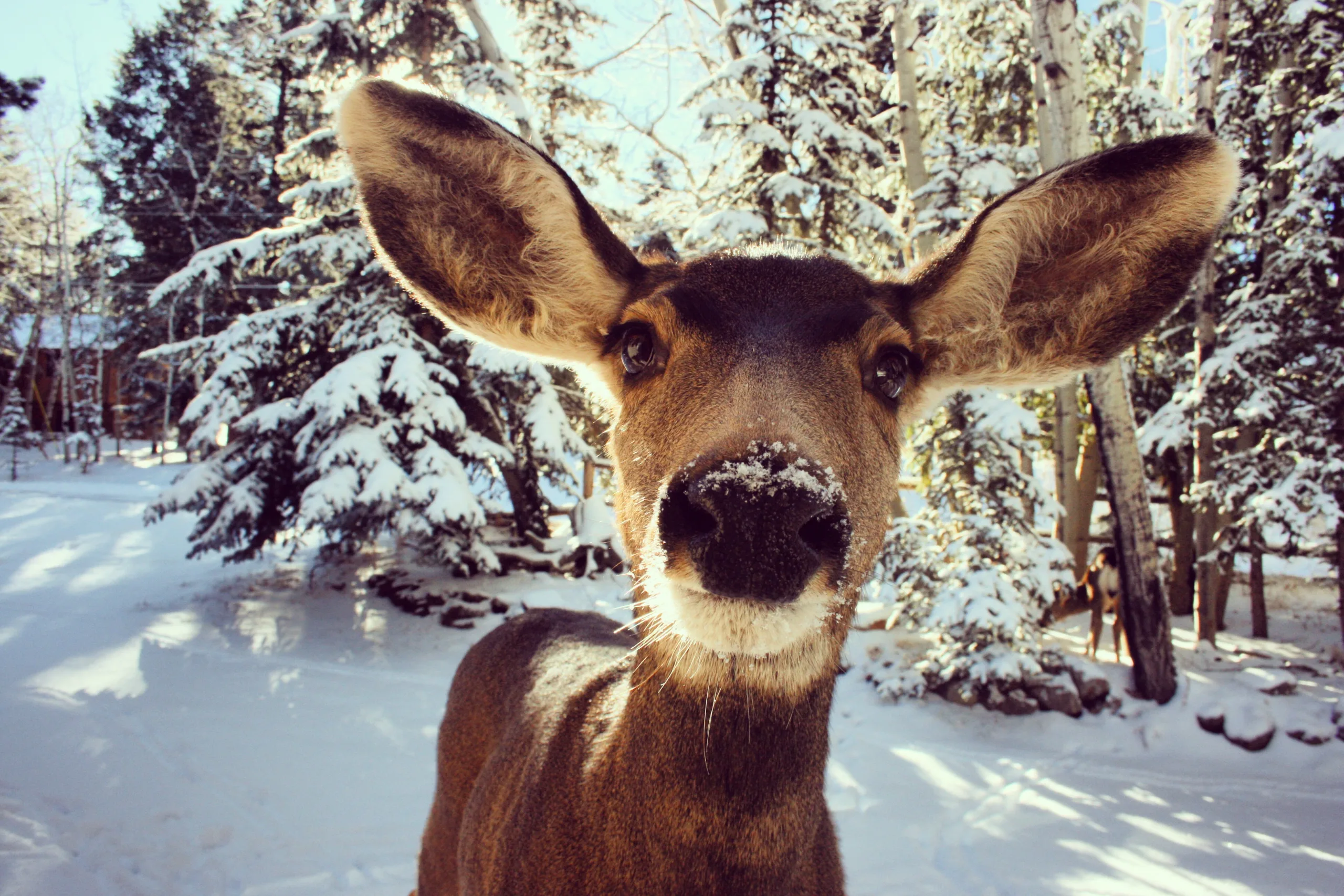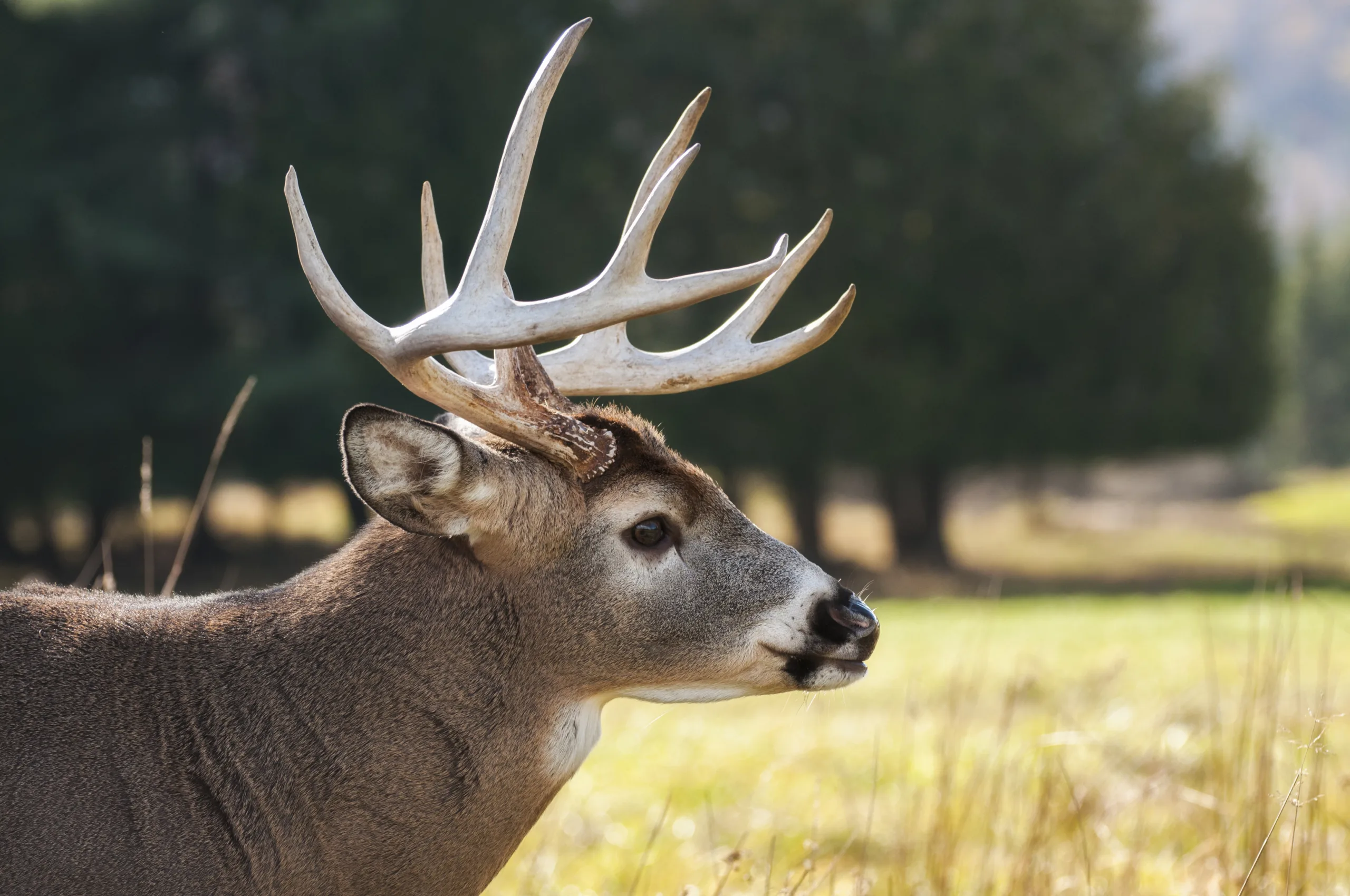Are you looking for a tree that is both aesthetically pleasing and deer resistant? The willow tree is a great option to consider!
Willow trees can be a beautiful addition to your landscape and, luckily, they are generally considered deer resistant. This article will discuss why willow trees are an excellent choice for those looking to avoid the destruction that comes with frequent deer visits. We’ll discuss what makes them so attractive to deer as well as why they are generally considered less appealing than other trees. Plus, we’ll cover additional tips for keeping deer away from your property.
By the end of this article, you’ll understand why the willow tree is an excellent choice for anyone looking for a beautiful and deer-resistant tree in their yard.Yes, Willow Trees are generally deer resistant.
Protecting Willow Trees from Deer
Willow trees are popular choices for landscaping and decorative purposes, but they can be susceptible to damage from deer. Deer can cause significant damage to willows, eating away at the leaves and even stripping the bark in some cases. Fortunately, there are a few steps you can take to help protect your willow trees from deer.
The first step is to establish a physical barrier around the tree, such as a fence or netting. This will help keep deer away from the tree, as they won’t be able to access it. If possible, make sure that the barrier is tall enough that deer can’t jump over it.
You can also use repellents to discourage deer from approaching your willow tree. Repellents are available in a variety of forms, including sprays and granules that you can spread around the base of the tree. These repellents contain ingredients that have odors or tastes that deer find unpleasant and will keep them away from your tree.
Another option is to plant other plants around your willow tree that deer don’t like. Planting plants such as garlic or daffodils near your willow tree may help confuse the deer and keep them away from it. Additionally, planting other trees or shrubs nearby may also provide additional protection for your willow tree as it will be more difficult for a hungry deer to find its way through dense foliage and brush.
Finally, if all else fails you may need to consider using fencing or nets around your entire garden or yard in order to keep out any unwanted visitors such as deer. This may seem like an extreme measure but it could be necessary if all other attempts at protecting your willow tree have failed.
By taking these steps you should be able to protect your willow tree from any potential damage caused by deer and ensure that it remains healthy and vibrant for many years to come!
Types of Trees Deer Avoid
Deer are typically very selective when it comes to the types of trees they eat. Many trees have physical characteristics or chemical compounds that make them distasteful or even toxic to deer, which helps protect the trees from being eaten. Some of the most common trees that deer avoid include conifers such as fir, spruce, and pine; deciduous trees such as oak, ash, and beech; and fruit trees such as apple, pear, and plum.
Conifers like fir, spruce, and pine contain high levels of resins and terpenes in their needles that are distasteful to deer. These resins also coat the trunks and branches of these trees making them difficult for deer to climb. Deciduous trees such as oak, ash, and beech produce strong odors from their bark that can be off-putting for deer. Additionally, many deciduous species have thorns or spines on their twigs which can deter browsing deer. Fruit trees such as apple, pear, and plum produce a wide range of chemicals in their fruits that repel deer due to its bitter taste.
Other tree species with physical characteristics or chemical compounds that make them unappealing to deer include birch, maple, cedar, hickory nut tree varieties (e.g., shagbark hickory), elm (including American elm), locusts (black locust), persimmon (American persimmon), sycamore (American sycamore), walnut (black walnut) , hackberry (common hackberry), box elder (boxelder maple), and magnolia species.
In summary, there are many types of trees that can help deter browsing by deer due to physical characteristics or chemical compounds they possess which make them distasteful or even toxic to the animal. Knowing which types of trees are least likely to be eaten by deer can help you protect your landscaping from browsing animals.
What Do Deer Eat?
Deer are herbivores, meaning they feed on plants, fruits, and vegetables. They can eat a variety of grasses, leaves, twigs, acorns, nuts, berries, and other plant matter. In the summertime, deer will feed on an abundance of succulent green vegetation including clover and alfalfa. In the winter months when food is scarce they may feed on buds and bark from trees. They will also eat hay and corn that is left out for them by humans.
Deer are also known to be scavengers and will feed on carrion if available. This can include road-killed animals or animal carcasses in wooded areas. Deer may also forage for mushrooms and other fungi in the springtime.
In addition to their plant-based diet, deer will supplement their diet with minerals in the form of salt licks or mineral blocks left out by humans. The minerals help to provide additional nutrients needed for healthy antler growth. Deer have also been known to consume pet food or bird seed if they come across it while searching for food.
Overall, deer have a varied diet that consists primarily of vegetation along with occasional supplements such as minerals or pet food if available.
Deterring Deer from Eating Trees
One of the most common problems faced by gardeners and homeowners is deer eating trees. While deer can provide a pleasant addition to the landscape, they can also cause considerable damage when they eat the leaves and bark of trees. Fortunately, there are a few steps that can be taken to deter deer from eating trees.
The first step is to make sure the tree is in good health. A healthy tree with plenty of foliage is less likely to be attractive to deer than a tree that is stressed or has sparse foliage. If the tree appears unhealthy, it may be necessary to fertilize or prune it before trying other deterrents.
Another way to deter deer from eating trees is by using repellents. Repellents are available in both liquid and granular form and contain ingredients such as putrescent egg solids, garlic oil, peppermint oil, and capsaicin, which makes them unpleasant for deer to eat. Repellents should be applied according to manufacturer’s instructions and reapplied after heavy rain or after about two weeks if there has been no precipitation.
In addition to repellents, fencing can also be an effective deterrent for keeping deer away from trees. Fencing should be at least 8 feet tall and made of metal mesh or wire mesh with openings small enough that deer cannot get through them. The fence should also extend underground at least 6 inches below the surface of the ground so that deer cannot dig underneath it.
Finally, planting certain types of plants around trees can help keep deer away as well. Plants like lavender, sweet woodruff, foxglove, hollyhocks, and yarrow have strong odors that are unappealing to deer and can act as natural repellents when planted around trees. Additionally, these plants provide an attractive landscape feature that will make your yard look beautiful while also protecting your trees from hungry deer!

What Smells Do Deer Dislike?
When it comes to deer, certain smells can be quite unpleasant and repulsive. There are a number of smells that deer find particularly unpleasant, including human urine, garlic, ammonia, and predator urine. Human urine is a great way to keep deer away from your garden or property as the smell is so strong and offensive to them. Garlic is also known to be effective at deterring them because of its strong odor. Ammonia has been used for many years as a deer repellent due to its powerful smell that can overpower even the toughest noses. Lastly, predator urine such as fox or coyote can be used to scare away deer as they recognize it as a threat and will stay away from the area.
Scare Tactics
One of the best ways to keep deer away from trees is to use scare tactics. This involves using things that startle or frighten deer, such as loud noises, bright lights, or strong odors. Motion-activated scarecrows that make loud noises when triggered are an effective way to deter deer from getting close to trees. Motion-activated lights and water sprinklers can also be used to frighten them away. Using strong-smelling repellents around the base of the trees can also help keep deer away. These repellents contain ingredients like garlic, pepper, or putrescent egg solids that have a very unpleasant smell for deer.
Fences
Installing a fence around trees is another way to keep deer away from trees. A tall fence—at least eight feet in height—is necessary in order to prevent deer from jumping over it. Fences should also have an overhang of at least two feet as this will prevent them from getting their head over the top and reaching the foliage on the tree branches. Electric fences are also effective at keeping deer away as they will deliver an electric shock if touched.
Natural Predators
Introducing natural predators into the area is another way to keep deer away from trees. Predators such as owls, hawks, coyotes, and foxes have a natural instinct to hunt and feed on small animals like rabbits and mice which can be found in most backyards or gardens where there are trees. Introducing these predators into the area can help keep deer numbers low and reduce the amount of damage they can cause to trees.
How to Make a Homemade Deer Repellent?
Making a homemade deer repellent is an effective and inexpensive way to keep deer away from your garden or landscape. It is important to note that there is no one-size-fits-all solution when it comes to repelling deer, and some trial and error may be needed to find the right combination of ingredients that works best for your particular situation. The following recipe can be used as a starting point for creating your own homemade deer repellent.
The key ingredients for a homemade deer repellent are garlic, cayenne pepper, and dish soap. Start by mixing 1 gallon of warm water with 1/4 cup of garlic powder and 1/4 cup of cayenne pepper in a large bucket or container. Once the mixture is well blended, add 1 tablespoon of dish soap and mix again until the soap has dissolved into the solution.
Once the mixture is ready, transfer it into a spray bottle and liberally apply it onto plants, foliage, or other areas where you want to keep deer away from. It’s important to note that this mixture should be reapplied every few weeks in order to remain effective against deer; however, it should not be applied when rain is expected within 24 hours as this will wash away the repellent’s potency.
In addition to spraying plants with this solution, you can also make use of other deterrents such as motion activated lights or sprinklers. These devices can help create an uncomfortable environment for deer which will discourage them from entering your garden or landscape in the first place.
By using these simple ingredients and techniques you can create an effective homemade deer repellent that will help keep these pesky critters out of your garden or landscape for good!

Conclusion
Willow trees are a great choice for gardeners and homeowners who need an attractive, low-maintenance tree that can also help deter deer. The trees are not completely deer-proof, however, as deer will still munch on the leaves and sometimes even the bark. Fortunately, the trees are usually able to withstand the damage that deer can cause and continue to thrive despite the occasional nibble. With proper care and attention, willow trees can provide a beautiful addition to your landscape while also helping to keep deer away.
In conclusion, willow trees are an excellent choice for gardeners who want a beautiful and low-maintenance tree in their landscape that is also resistant to deer damage. While these trees are not completely deer-proof, they can still provide adequate protection from deer when combined with other preventative measures. With their attractive appearance and ability to thrive in many different climates, willow trees make for an ideal addition to any yard or garden.

My interest in trees started when I first saw the giant sequoias in Yosemite.
I was a teenager then, and I remember thinking, “I need to learn more about this.”
That moment stuck with me.
A few years later, I went on to study forestry at Michigan Tech.
Since graduating, I’ve worked in a mix of hands-on tree care and community education.
I’ve spent over ten years helping people understand how to plant, maintain, and protect the trees in their neighborhoods.
I don’t see trees as just part of the landscape.
They are living things that make a real difference in our daily lives.
